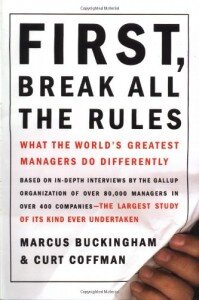In an interview with Business Insider later in October, Kostin made a How to buy icon couple of comparisons to the dot-com bubble, which peaked in 2000. One is that valuations for the largest stocks in the market are significantly higher than the rest of the S&P 500. Kahn told CNN Business that his long-short fund is only invested about 30% in bullish positions that it expects to go up.
A Rosy Start
Stocks are capping off a banner year led by AI names like Nvidia and Palantir, but as investors get ready for 2025, the market seems to be shifting. The presidential election set off a rotation into cyclical stocks in the financial and energy sectors, and small-caps were big winners as well. The Russell 2000 jumped 5.8% on Nov. 6, though the index has been mostly flat since then. Keep in mind that Costco’s business continued to perform quite well over this time. From the start of 2000 through the end of 2002, both revenue and earnings per share (EPS) were up. But it still demonstrates how a P/E ratio works and why one would want to a man for all markets buy a business at a lower P/E ratio if at all possible.
A high level can indicate that bears are beginning to dominate a bull market and a pullback may be on its way. Investors could also use contrarian investment strategies, in which they refuse to follow the herd, sell when others buy, and try to achieve better-than-average returns. While sector-specific enthusiasm is evident today, UBS highlighted that it is not based solely on hype as was the case for much of the dotcom bubble, but on actual shareholder returns. The S&P 500 has climbed for 16 of the last 18 weeks and notched a new all-time closing high on Friday, but the gains have been heavily concentrated among the so-called “Magnificent 7” tech behemoths, led by skyrocketing Nvidia. Additionally, investors’ irrational behavior, often driven by fear and greed, adds another layer of unpredictability. Newton famously lost a substantial amount of money, reportedly saying, “I can calculate the motions of the heavenly bodies, but not the madness of people.”
- In addition, the credit rating for AIG is downgraded because of the credit derivative contracts they’d underwritten.
- If the performance holds this year, that would be three out of the past four years with gains of 25% or more.
- Newton famously lost a substantial amount of money, reportedly saying, “I can calculate the motions of the heavenly bodies, but not the madness of people.”
- Eventually, prices hit a wall and then fall very far, very fast, as the bubble “pops.” Bubbles can occur to all kinds of assets in addition to stocks, from real estate and collectibles, to commodities and cryptocurrencies.
Economic Factors
“That’s usually the place to be.” In 2000, as U.S. stocks cratered, the Bloomberg U.S. Aggregate Bond index, a high-quality benchmark of U.S. corporate and government debt, gained 11.6%. It would go on to deliver a 6.3% annualized return how to invest in startups and equity crowdfunding like an angel investor over the next decade. Founded in 1993, The Motley Fool is a financial services company dedicated to making the world smarter, happier, and richer.
“Irrational exuberance is the psychological basis of a speculative bubble,” wrote economist Robert Shiller in his 2000 book, Irrational Exuberance. In July 2000, eToys reported its fiscal first-quarter loss widened to $59.5 million from $20.8 million a year earlier, even as sales tripled over this period to $24.9 million. It added 219,000 new customers during the quarter, but the company was not able to show bottom-line profits.
The AI-fueled stock market bubble will crash in 2026, research firm says
Only time can reveal whether market optimism over share prices was ill-placed. Rare tulip bulbs became the ultimate status symbol and were soon trading for as much as six times the average person’s salary. However, when the price became too high, auction rooms became deserted, the market lost its liquidity, and the so-called Tulipmania wilted.
David Einhorn, founder of hedge fund Greenlight Capital
Sekera also said on the day after the election that enthusiasm about Trump’s win and the prospect of higher growth was making the market overvalued. “Trees don’t grow to the sky, definitely not uninterrupted,” Peltz said, using an idiom that refers to valuations becoming disconnected from reality. “There will be something that might upset it. I think you’ve got euphoria from the election.”
Learn from stock market bubbles of the past, why they can be unpredictable and understand what characterises a highly speculative financial market. Most are driven by the arrival of a life-changing technology (the computer, the internet, artificial intelligence) or the belief that there’s a permanent scarcity of goods. At this stage, the investors lose perspective of performance and keep pouring in money without realizing that the companies are not doing their bit.

.jpeg)
.jpeg)




.gif)
.jpeg)